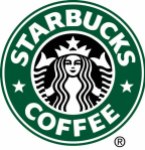 To quote @ScottMonty Global Head of Social Media at Ford Motor Company, “What’s the ROI of not putting your pants on in the morning?” He’s talking about social media marketing. But the same applies to branding. In other words, you can’t afford not to brand.
To quote @ScottMonty Global Head of Social Media at Ford Motor Company, “What’s the ROI of not putting your pants on in the morning?” He’s talking about social media marketing. But the same applies to branding. In other words, you can’t afford not to brand.
So if the ROI of good branding is huge, how do you minimize the costs? Here are three cost-effective tools you can start using right away.
1. Email is Free Ad Space!
I often receive emails without any “signature” –what a lost opportunity! A signature line doesn’t just give you a chance to tell your name and title, it gives you space for a blog link, twitter hashtag for an upcoming event, or YouTube link to your latest video. This simple free advertising can be employed unilaterally—and uniformly–across your organization. (Send a “signature of the week” email to everyone with easily copied info.)
2. Mine Your Own Content!
A tool everyone has, but rarely maximizes—is your own media library. Maybe because it’s not so much a library as a pile, a box, a series of files that no one can find. Graphics, photographs, audio interviews or videotape footage–these all have sunk costs, and can be re-purposed for much less than the initial investment. The key is to use metatags and an archiving and workflow system that makes sense to everyone in your organization. Avoid those awful automatic names (IMG_001) by batch renaming–but always maintain the original name in the data. (Adobe Bridge is a handy tool for this, though there are many others. Here’s a “how to” video by my friend @richardharrington on how to do this.) But whether you use a sophisticated archiving system or a spreadsheet, the ultimate cost savings to promote your brand is large, since you will avoid re-shooting or re-acquiring images or footage where something from your own “stock” library would work to tell the story.
3. Video Sells!
According to IndieGogo, “Crowdfunding pitches with video content raise 112% more than those without.” Video certainly is one of the top-most searched items on the web. But producing a branding video in-house can be daunting, and commissioning one to be made can be costly. So consider starting small, with a podcast. With just the investment in a digital audio recorder or a small digital camera, and some basic audio recording/mixing software (here), you can give out some useful information, and cross-promote your organization’s other content–books, websites, conferences, upcoming events.
Just using these three low-cost or free tools can help you gain ground with your brand, which in turn can help you increase fundraising, sales, visibility, memberships or issue awareness.











